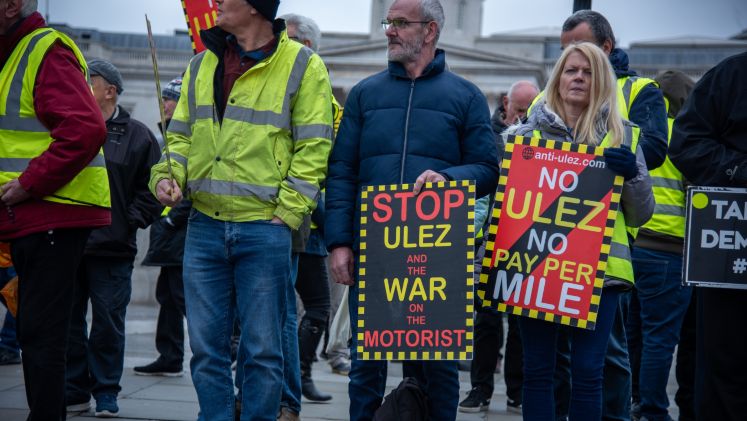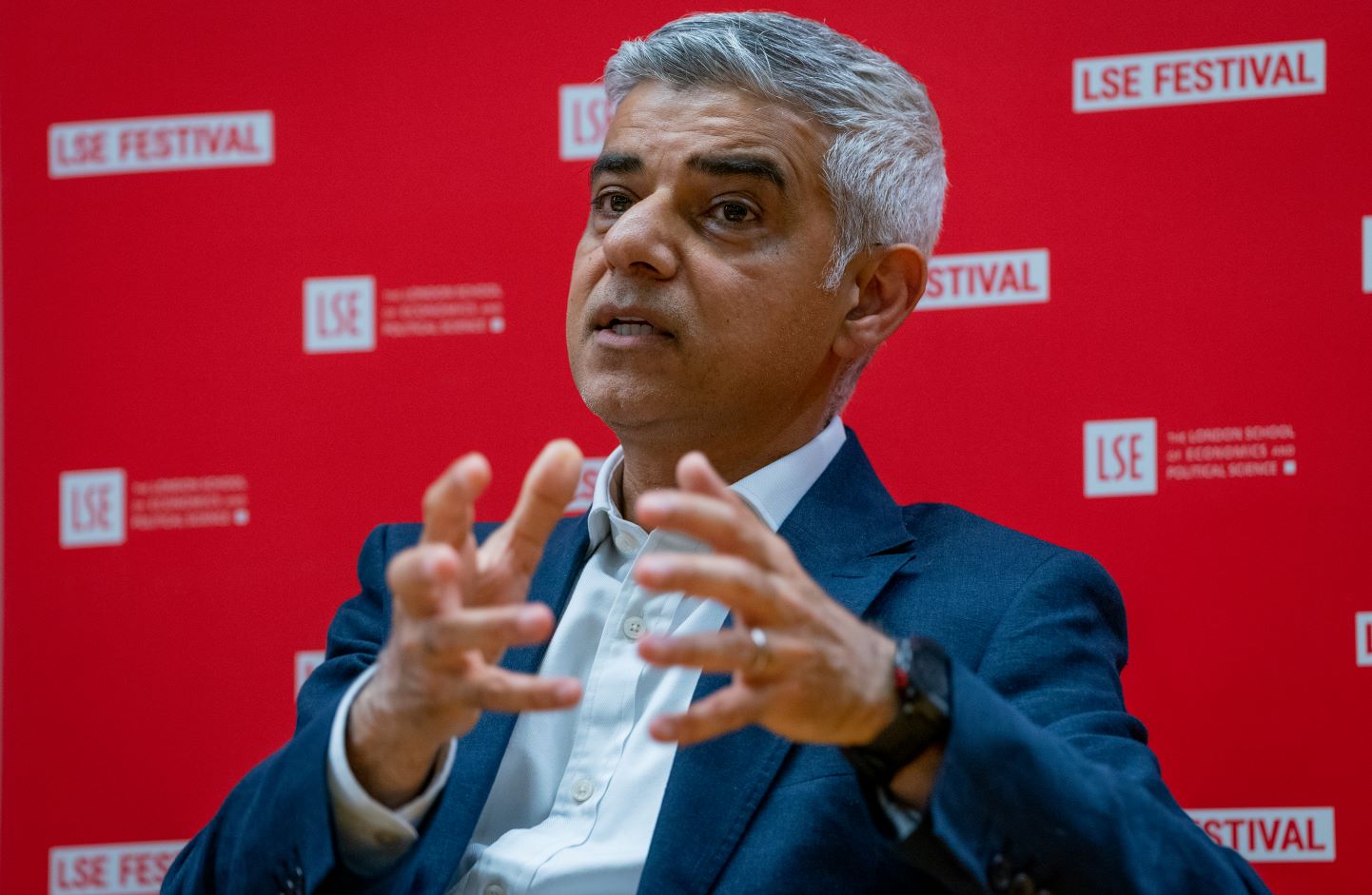If recent MRP polling is to be believed, the Conservatives are about to be wiped out in London. Jenevieve Treadwell traces the steps of how the Labour party came to dominate the capital, and argues that contrary to popular belief it was economics, rather than social issues that lead to the present. If the Conservatives want to become competitive in London again, they need to move away from culture-war-style messaging and focus on the economy.
Recent polls have predicted that the Conservatives will win anywhere between one and five seats in London, which would be the Conservative’s worst-ever performance in the capital. In a city with 73 constituencies (75 this election), the Conservatives have never held fewer than 15 per cent. If current predictions even come close to being true, it’ll confirm what many see as London’s “slide into a one-party city.”
Obviously, this is bad news for the Conservative Party. But, regardless of personal politics, this isn’t good for Londoners either. Some have raised concerns about what a “supermajority” would do to accountability nationally. If the other parties see London as uncrackable it will impoverish the quality of political debate and disincentivise other parties from making genuine policy offerings to Londoners. But Labour’s hegemony in the capital is not inevitable. Instead, the Conservative’s drift towards culture war policy and rhetoric has failed to resonate in a city driven strongly by economic concerns.
Result of the 2019 Election in London Predicted result of the 2024 General Election in London using More in Common’s MRP
London has historically had a slight skew towards Labour. During Labour governments, London swung towards Labour. While during Conservative governments, London has stayed moored to the national Labour vote share. So, in 1945, when the Labour Party won 61 per cent of the vote nationally, they won 77 per cent of seats in London. While the 1955 General Election brought in a Conservatives small majority, Labour managed to win 44 per cent of seats nationally and 47 per cent of seats in London.
Likewise, when Labour won another majority in 1966 with 58 per cent of the vote, they won 63 per cent of seats in London. And like the rest of the country, between the 1979 and 1997 elections, the Conservatives won a majority in London. This culminated in Labour’s worst (post-war) result in the capital in 1987, when they only won 27 per cent of London seats – less than Labour’s national share of 35 per cent.
Labour’s vote share nationally and in London, 1945-2019
In the 1997 election, while the rest of the country pivoted hard towards Labour, the landslide in London was even greater. Just ten years after they failed to win even a third of seats in the city in 1987, Labour won 77 per cent of London seats compared to 63 per cent nationally. This might seem like the beginning of London’s disconnect from the country, but Labour’s large wins in London under New Labour fit the pattern of success typical of a winning Labour Party.
This move to Labour probably hasn’t happened because London is a uniquely left-leaning and liberal place.
Instead, London began its current attachment to Labour in 2010. In that election, Labour won 52 per cent of seats in London but only 40 per cent nationally. In other words, if the London result was replicated across the whole country, Gordon Brown would have stayed as Prime Minister. Since then, Labour’s vote share in London has consistently strengthened (relatively) while it has tended to wane nationally.
This move to Labour probably hasn’t happened because London is a uniquely left-wing and liberal place. After all, London contains a real mix of values across the economic and cultural spectrum. Some of the country’s most socially conservative constituencies can be found along the Thames in Zones 3 and 4. “Conservatism” here is a technical term, measuring the extent to which people value order and authority in society, as opposed to “liberals” who value openness and personal freedom to a greater extent. “Left-wing” and “right-wing” on the other hand are the opposite ends of a separate scale which has traditionally measured attitudes towards economic inequality and the redistribution of wealth.
London’s east is made up of two halves. A wall of economically and culturally conservative seats flank outer East London, places like Romford and Orpington. Places like Barking and East Ham, in London’s nearer east, are economically left-wing but quite socially conservative. The central London stereotype of leaning left on culture and the economy is real, with areas such as Islington and Hammersmith being some of the most left and liberal in the country. Just to the west, seats like Battersea and Richmond, make up London’s socially liberal but economically right-wing seats.
Unlike the rest of the country, economics became more important in London, with more economically left-wing people more likely to vote Labour, independently of where they stand on social issues.
For a long time, economics has been the primary axis of political mobilisation, with many voting along class lines. The Conservative Party tended to secure economically right-wing seats, winning liberals and authoritarians alike. Conversely, Labour tended to win in economically left-wing seats, again mostly regardless of their cultural persuasion. In 2010, Labour won 92 per cent of left-wing authoritarian seats and 82 per cent of left-wing liberal seats, while the Conservatives won 85 per cent of right-wing liberal seats and 97 per cent of right-wing authoritarian seats.
However, this has been slowly decoupling. In 2019, economics had become less well correlated with voting and culture became more related – so the more culturally right-wing you were the more likely you were to vote Conservative. This was only partly true of London, however. Like the rest of the county, the Conservative vote became more closely related to cultural values the more culturally authoritarian you were, the more likely you were to vote Tory. But unlike the rest of the country, economics became more important in London, with more economically left-wing people more likely to vote Labour, independently of where they stand on social issues.
Moving to the 2024 election, the Conservative Party’s emphasis on culture could cost them London.
Downplaying economics for a more culturally conservative message – Brexit and immigration – failed to resonate with the economically right-wing but culturally liberal part of the Conservatives’ voter base. In London, in 2019, this strategy cost the Conservatives Putney, which they had held since 2005. And while the declining salience of economics meant that Labour’s share of economically left-wing but culturally conservative seats across England fell from 92 per cent in 2010 to 68 per cent in 2019, Labour retained all their left-wing and socially conservative seats in London.
Moving to the 2024 election, the Conservative Party’s emphasis on culture could cost them London. There are only nine right-wing authoritarian seats in the capital, and one of these (Harrow West) voted Labour in 2019. In this election, the Conservatives are competing with the Reform Party for many of these voters. Some polls suggest that Reform’s vote share will displace the Conservatives, allowing Labour to win on thin majorities.
This is not just bad for the Conservative Party; it is bad for Londoners. London is set to return anywhere below ten Conservative MPs to Parliament and around five for the Liberal Democrats. With Labour controlling the rest (around 85 per cent or more of London seats) the city is effectively a “one-party city”, and with this comes a range of challenges.
In the short term, Labour will be representing a lot of people who did not vote for them. The Labour victory in a number of seats depends on the Reform vote share splitting the right, leaving Labour with thin majorities. This will leave a (large) minority of people represented by people whom they did not vote for and who do not share their values and policy preferences. Not delivering policies that align with these voters’ preferences risks increasing the feeling that “politics doesn’t work for me.” Ultimately, disillusionment with politics can be linked to growing support for populist parties as people seek answers beyond the status quo.
In the longer term, the relationship between London’s Labour Government and the Conservative national Government has, at points, been strained and inefficient. While symmetry at the local and national level may put an end to this for the foreseeable, Labour will eventually fall out of favour nationally. If, when this happens, London again sticks with Labour it could mean a return to this more combative politics.
If the choice in London becomes Labour or minor parties, practically, people no longer have a genuine choice.
Finally, Labour’s dominance in London raises questions about accountability and credible democratic competition. Initially, large-scale wins are no bad thing. These “thumping majorities” allow political parties to set the legislative agenda without too much compromise and make it easier to deliver policies. But after a while, one party dominance may impoverish political debate.
If Labour continues to dominate and other parties do not think they can win London they will not waste their time trying. Because if the city isn’t seen as marginal, no parties will actually design policies that benefit London. And if the Conservative Party continues to make itself unelectable in London, the lack of competition weakens representation, political responsiveness and accountability.
Democracy needs politicians to compete for the public’s support by creating policy offerings that work for them. If the choice in London becomes Labour or minor parties, practically, people no longer have a genuine choice. To become a serious force in London politics again, the Conservatives need to acknowledge that in an economically motivated city, culture-war-style messaging makes it impossible to build a winning electoral coalition. Instead, they should return to a policy platform that gets the maximum amount of buy-in from across the city: left-leaning economic policies.
All articles posted on this blog give the views of the author(s), and not the position of LSE British Politics and Policy, nor of the London School of Economics and Political Science.
Image credit: Tom Spender on Shutterstock










